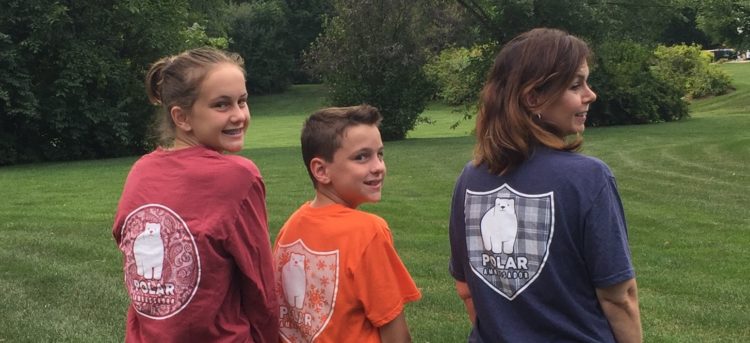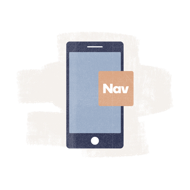Polar Ambassadors is a true family business. Kate Kennedy runs the company with her husband and three children, ages 17, 15 and 11. The idea for the company came from her 17-year-old who is on his way to college to study entrepreneurship. “This is a nice way for all of us to work together in a way that is doing something for a better cause,” said Kennedy. Polar Ambassadors sells apparel items intended to start conversations about the conservation of the Arctic ice. A percentage of sales is donated to organizations that are dedicated to protecting polar bears and their natural habitat.
Market Research Shapes the Company
My husband and I are both in marketing research. Our jobs are about understanding consumer needs, what consumers want, and what motivates them. We both have MBAs. His is in finance and mine is in entrepreneurship and innovation. For a number of years, I was working as a brand manager for Butterball Turkey.
The business was my son’s idea. We all are conscious about how our actions impact the world. We’re really committed to recycling. We started reading more about how polar bears are impacted by some of the small changes that we make and how those are sort of amplified into bigger changes. There are only 20,000-25,000 polar bears left in the wild. To put that in perspective, my town alone has a population of 40,000, and it’s not a huge town. That made us pause and say, “What can we do to start the awareness and do what we can to help?”
We did some market research with our target audience. We hired an artist to design our logo. We looked into incorporating. We did a financial analysis. We did a lot of that background research before we launched. We wanted to make sure it wasn’t just our thought that it was a good thing. We wanted to know that other people were interested and feel good about the cause.
We try to support local businesses, so we work with a local printer for the apparel. We created the website and manage the inventory.
Managing Business Finances
We financed the business with our savings. We tried to make it reasonable to begin with. There’s always a lot in the startup costs – always more than you think. It’s amazing how much things cost. After we make our donations, we reinvesting a lot back into the company.
We use credit cards, but we try to pay them off pretty quickly. We want to make sure it is a self-sustained business. We pay half upfront when we do a print run of our apparel. We pay the other half on delivery. (Editor’s Note: You can see how credit cards are impacting your personal and business credit scores for free on Nav.)
We do sort of a combination of a qualitative and quantitative analysis to forecast and manage cash flow. We have some apparel that sells better in the winter – the long-sleeve shirts and things. We are looking at doing a run of winter hats and water bottles. Those things are harder for us to predict because we don’t know how those will sell yet. So, that’s sort based on qualitative things or how we feel. For other inventory, we look at historical numbers to try to predict what will happen this year.
Business Challenges & Rewards
The most challenging thing is that getting the word out isn’t one easy fix. It’s a combination of grassroots and Twitter and Facebook posts and Facebook ads and festivals. It’s sort of fragmented, and that’s challenging to keep up with. It’s hard to allocate resources and decide where to spend our time and money.
The most rewarding thing is that we all feel really, really good about the cause. We feel like we’re making a tiny bit of a difference on a kind of daunting issue. That keeps us going and motivates us.
Business Lessons Learned
We put a lot of faith and money into online ads at the beginning. We thought they could be pretty targeted. But, we didn’t see a great response in the click-through rate. So, now we’re more focused on grassroots. There’s not an easy way to get our story out there.
One of the best things we did at the start was talk to people who are in our target audience. We’re targeting 13- to 25-year-olds. That’s who we designed the logo around. That’s a group that’s really concerned about the environment and concerned about doing things right. Doing that kind of upfront research took us a couple months before launch and we had to re-do some things, but I feel like that was a really valuable step.
Advice for New Entrepreneurs
I don’t think you can just launch a business to make money. You need to find something you feel really passionate about. It’s a lot of work, time, money, and effort. Hopefully, eventually, success will come and you’ll be making tons of money. But, in the meantime, it’s a whole lot of work.
What’s Next for Polar Ambassadors?
We have new products coming out. We have some new designs for the shirts. We’re going to be focusing more on the long-sleeve shirts coming up into winter now. Our water bottles and beanie hats will be coming soon!
Image courtesy of Kate Kennedy
This article was originally written on August 17, 2017.



Have at it! We'd love to hear from you and encourage a lively discussion among our users. Please help us keep our site clean and protect yourself. Refrain from posting overtly promotional content, and avoid disclosing personal information such as bank account or phone numbers.
Reviews Disclosure: The responses below are not provided or commissioned by the credit card, financing and service companies that appear on this site. Responses have not been reviewed, approved or otherwise endorsed by the credit card, financing and service companies and it is not their responsibility to ensure all posts and/or questions are answered.